ELLE DECOR Goes to Washington, D.C.
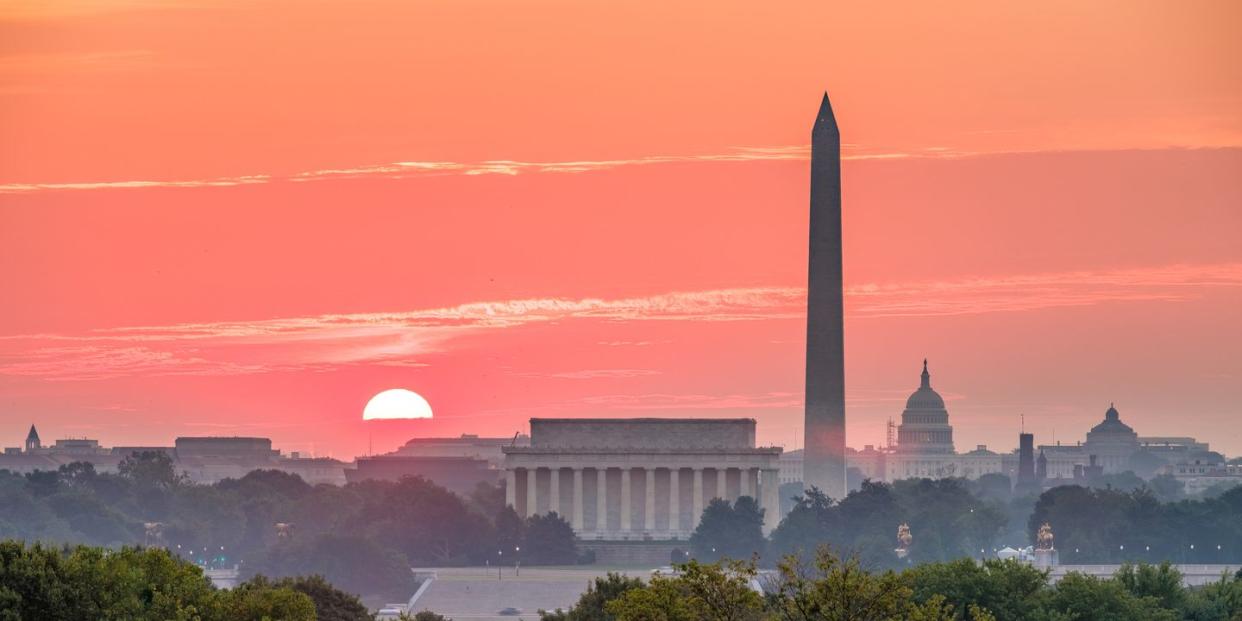
"Hearst Magazines and Yahoo may earn commission or revenue on some items through these links."
When was the last time you were in Washington, D.C.? If your answer runs along the lines of “middle-school class trip,” then it’s time you put this destination on your domestic travel bucket list. Our nation’s capital has it all: world-class mostly free museums, fabulous hotels, a thriving culinary scene (24 restaurants with Michelin stars) and a sexy international population, thanks to political, cultural, and educational institutions. Best yet, you can experience quite a lot in a long weekend. There’s more to look forward to this month and next, including the return of outdoor ice skating, holiday markets, the lighting of both the National Menorah and National Christmas Tree, the legendary Georgetown Glow (a free public light experience) and the holiday boat parade, with over 60 beautifully decorated boats floating along the Washington Channel at the Wharf.
Here, our suggestions, generally but not exclusively filtered through the lens of design and newness and what we were able to see in an action-packed four days in the district.
WHERE TO STAY
Hotels in D.C. have often been described as “corporate” and that’s pretty spot-on of many rooms we saw (their lobbies and restaurants, however, are often another, much better story). Here are our top picks.
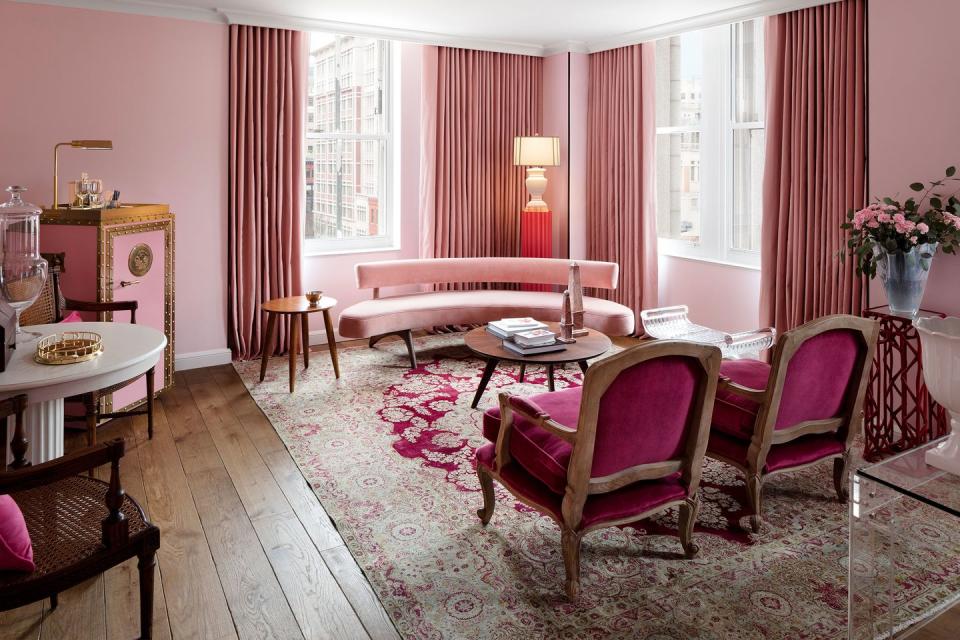
Constructed in 1891 as a headquarters for Riggs National Bank, the hotel (known as the Bank of Presidents, with 23 U.S. presidents having kept accounts there) is a landmark example of Richardson Romanesque architecture. In its current incarnation, designed by Jacu Strauss, the 181 rooms are inspired by the golden age of banking and meant to evoke the thrill of opening a safety deposit box. Some have upholstered headboards and wallpaper by Voutsa, all have mini bars custom-made to resemble vaults, and four First Lady suites have extra details including, in the Louisa Adams, a piano. The hotel is walking distance from many top sites, museums, and eateries, but their in-house options are incredibly good and have become local favorites. Café Riggs, located on the ground floor, is a restaurant in the tradition of the grand brasseries of Europe, and the Silver Lyan, the hotel’s subterranean bar, is housed in what was the original bank vault.
Located in a former printing press turned bus terminal, the Eaton is a 209-room hotel that opened four years ago and, judging from the bustling lobby scene, has succeeded in becoming a social and cultural hub for the city. Designed in part by ELLE DECOR A-List firm Gachot Studios and Parts and Labor Design, the property was developed by Katherine Lo—whose father is the executive chairman of the Langham Hospitality Group—and intended to be more than a hotel: also a space for “progressive social change” via its exhibitions, programming, and staff. Guest rooms are meant to feel like a homey apartment, stocked with books and a record player and clean amenities but no coffeemaker and nothing in terms of a minibar (you gotta get dressed to fuel up at either the Baker’s Daughter on the ground floor or a makeshift snack shop in the lobby). There’s a massive co-working space; Michele’s, a French-American restaurant open for dinner weekdays and brunch weekends; and a sort of secret speakeasy, Allegory. Also Wild Days, the very cool and popular rooftop bar (keep in mind when booking a room on a higher floor).

Other hotels worth a drive-by, meal, or drink: The Conrad opened last year in a glassy Herzog & de Meuron building in City Center, with interiors by Rottet Studio (check out the soaring atrium). More than a hotel, it’s a mixed-use development with conference and event space and luxury shopping galore. The Watergate Hotel is a Brutalist icon a bit off-the-beaten path on the Potomac River, a Luigi Moretti design that debuted in 1965. The public spaces were recently glammed up by Ron Arad, with staff uniforms by Mad Men costume designer Janie Bryant. Rooms are a tad uninspired but the views (many from balconies) are phenomenal, and the spa seemed a tempting respite from the tech conference that had taken over the property during a recent visit. It’s similarly all about the view at Hotel Zena, albeit the urban ones of Thomas Circle and its surrounds. It’s billed as “a bold cultural hub celebrating the accomplishments of women and recognizing their enduring struggle for gender equality” from its design (by Dawson Design Associates) to the substantial art collection, which ranges from cheeky to provocative. Most Instagrammed: the portrait of the late great Ruth Bader Ginsberg, rendered in (yes, really) tampons, followed by the view from the rooftop, complete with a rare-in-this-town pool.
WHAT TO SEE
All of the Smithsonian Museums are free of charge—that’s 16 in D.C. proper, including the Smithsonian’s National Zoo, and Udvar-Hazy Center, just outside of Dulles airport, which houses all the aviation and space artifacts that won’t fit in the National Air and Space Museum. If reading that sentence intimidated or exhausted you, take a breath, and we’ll break it down.

On the Mall
The big design news is the unveiling of James McNeill Whistler’s Peacock Room at the National Museum of Asian Art (also known as the Freer), after it was closed for conservation. Many design aficionados count this decorative arts masterpiece, which has been on display at the museum for 99 years, among the most inspiring rooms in the world. The National Museum of African American History & Culture, designed by David Adjaye, is a must-see, but know that it takes about three hours or more to properly experience, and free timed entry passes are required. Brutalist fans will naturally want to pass by the Hirschhorn, a muscular beauty designed by Gordon Bunshaft, that debuted in 1969. While there, check out the Yayoi Kusama rooms, recently extended through spring 2023, and head to the gift shop for a copy of the Brutalist Washington Map by Deane Madsen ($10). The National Gallery of Art’s East Building is a modern wonder by I.M. Pei, with a monolithic Henry Moore sculpture at its entrance and Pei’s now iconic glass pyramids in the plaza separating this building from the original west gallery. The Library of Congress was the largest library in the world when it opened in 1897, and it is often cited as the most beautiful. Fun fact: The current Librarian of Congress is Carla Hayden, the first woman and the first African American to lead the library. A timed entry pass is required to tour this glorious Italian Renaissance edifice.
Elsewhere
The brand new Rubell Museum D.C. brings the famed Miami art collection to the nation’s capital, with exhibitions of works drawn from the Rubell family’s unparalleled and ever-expanding collection of contemporary paintings, sculptures, photographs, videos, and site-specific work by American and international artists. Housed in a historic Georgian Revival–style building that opened in 1906 as Francis L. Cardozo Elementary, a public school serving the Black community of Southwest D.C., it remains one of the last surviving buildings associated with the preurban renewal history of that area. Admission is free for D.C. residents.
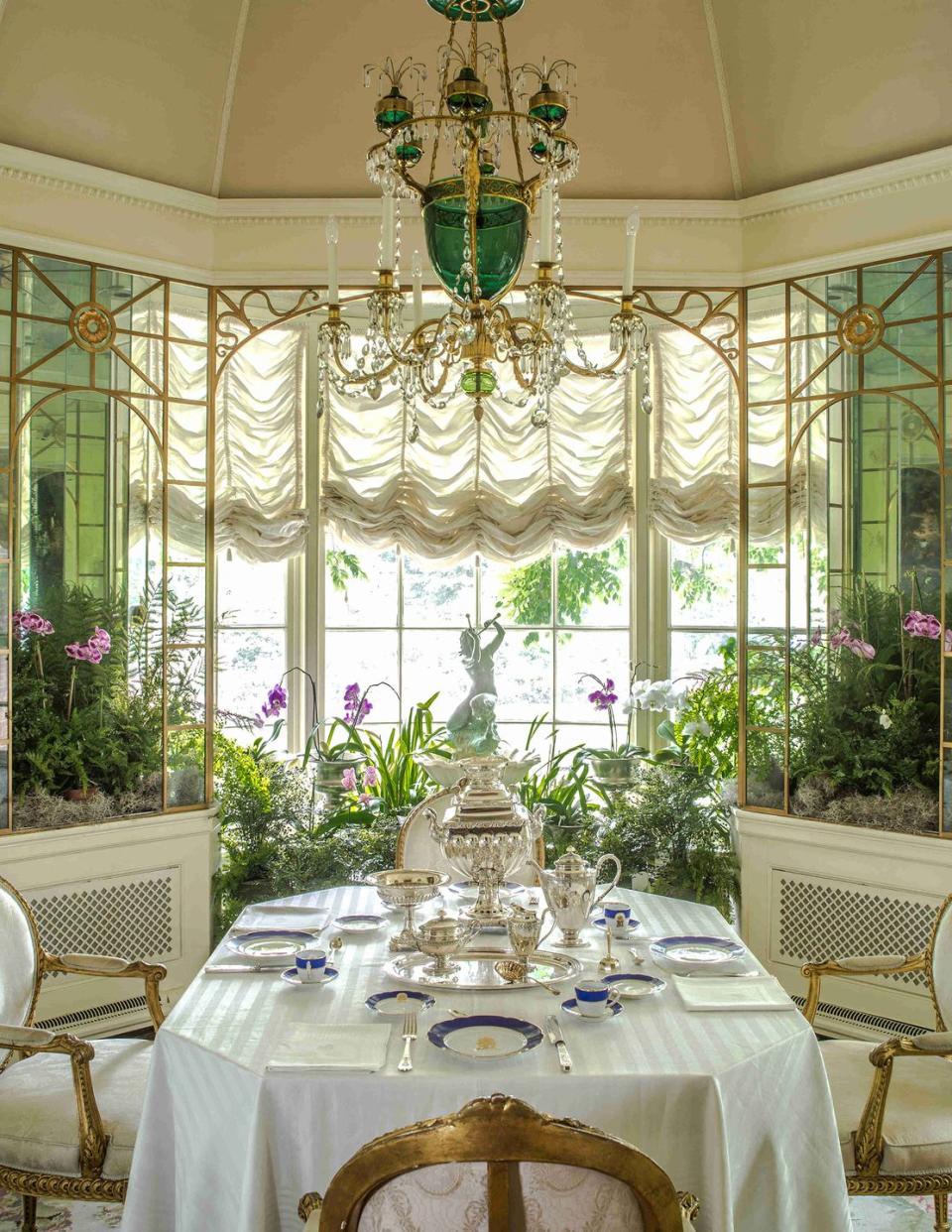
Hillwood Estate Museum and Gardens easily warrants a dedicated post; it’s the home of Marjorie Merriweather Post and is well worth the Uber from downtown. Purchased in 1955 as her spring and fall residence (Mar-A-Lago was her winter abode and summers were spent in the Adirondacks), the home is an example of exceedingly expensive and elegant hoarding. It boasts the most comprehensive collection of Russian imperial art outside Russia, loads of 18th-century French furniture, a roomful of Fabergé eggs, jewels, gigantic rock crystal chandeliers, and a lot more. Tickets are $15, with discounts for seniors, students, and children.
The Renwick Gallery, a branch museum of the Smithsonian American Art Museum is dedicated to contemporary craft and decorative arts, and their current exhibition, This Present Moment: Crafting a Better World is a must-see. It includes fascinating and often thought-provoking works by Nick Cave, Bisa Butler, Basil Kincaid, Roberto Lugo, and a host of others, all in a landmark building that was the first built expressly as an art museum in the U.S.
The Kennedy Center, you may be surprised to learn, is more than a stellar performing arts venue. A free guided tour takes visitors through this national living memorial to our 35th president, designed by Edward Durell Stone, or explore on your own (it’s open until midnight). Be sure to check out the new permanent exhibit Art and Ideals: President John F. Kennedy, a fetching journey harnessing the latest in digital technology to explore how the arts infused and informed the Kennedy presidency, complete with historic photos, recordings, and ephemera. Be sure to check the schedule of the REACH, the campus’s new Steven Holl–designed cultural annex for screenings, dance classes, and much more.
WHERE TO EAT
The food scene in the District is off-the-charts fabulous. You name it, it’s here, in a range of prices. It can be oddly difficult to find lunch in some neighborhoods, as a lot of the buzzier restaurants don’t open until 5 p.m. (that said, brunch seems to be bountiful). No meal here was a miss, on any level of the price spectrum.
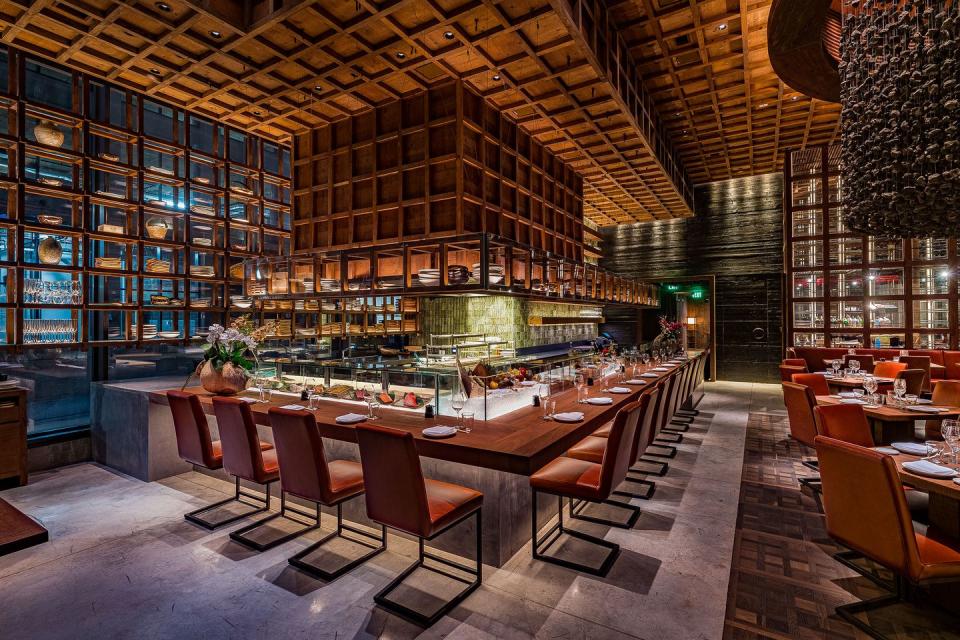
It can be tough to get a reservation at Albi, which was awarded a Michelin star earlier this year. Chef Michael Rafidi’s modern Mediterranean menu is based on recipes from the Palestinian side of his family as well as his travels through the Levant, and he absolutely nails super-fresh takes on traditional dishes, in this half-Palestinian writer’s opinion. (The only “needs improvement” note: Please teach servers how to properly pronounce “hummus.”). If a seat at Albi is impossible to score, check out Rafidi’s more casual spot, Yellow, also in the Navy Yard with an additional location opening in Georgetown this fall. It’s open for breakfast, lunch, and brunch and offers the rare opportunity to try a za’atar croissant and a coconut cardamom iced coffee. Yalla!
Shōtō is another hard-to-snag reservation. This much-lauded contemporary Japanese izakaya from London-based restaurateur Arjun Waney was designed by Noriyoshi Muramatsu of Tokyo-based Studio Glitt, with Japanese touches that range from the entry door handle (a bronzed Japanese tree branch) to handcrafted tiles cast in bamboo and a dramatic ceiling fixture created from hundreds of rocks from an active Japanese volcano. Dining at Shōtō, which translates to “short sword” in Japanese, can be an à la carte or omakase experience, but whatever you choose, get ready for a memorable journey in both taste and presentation.
Oyster Oyster’s 28 seats were regularly booked before they were bestowed with a Michelin Star this year. Chef Rob Rubba offers two tasting menus—vegetarian and vegan—with seasonal offerings that often focus on both “environmentally beneficial oysters from the Chesapeake and locally foraged mushrooms.” Hence the name. (The tables are also set with candles crafted from oyster shells filled with wax). To quote from the Michelin guide, “Even carnivores cannot deny [the] food is original, confident, and tastes as good as it looks.” Note: You won’t see a menu until after the meal, but said menu can be taken home and planted, as it’s made with recycled paper embedded with seeds.
Chef and owner Joancarlo Parkhurst was born in Puerto Rico but spent his formative years in New York City. With La Famosa he’s bringing the soulful cooking of his homeland to the Navy Yard neighborhood with a comparatively affordable all-day menu and influences ranging from indigenous Taino to the African diaspora. The colorful space, by GrizForm Design Architects, was inspired by the casitas that sprinkle the Puerto Rican countryside with exposed stenciled concrete floors, woven rattan light fixtures, and cozy swing seating in the window.
Founded by a Venezuelan, an Italian, and a Yugoslavian-Belgian, Immigrant Food bills itself as the first “cause-casual” or “gastro-advocacy” restaurant, with culinary representation of our nation’s immigrant diversity, often in mash-up form (Tuna Tartare Tostada, Mumbai Mariachi bowl, Lamb Larb skewers described as “Mideast meets Thailand). Best yet, there are three locations in this not-so-large town so one’s probably near wherever you’re wandering on any given day.
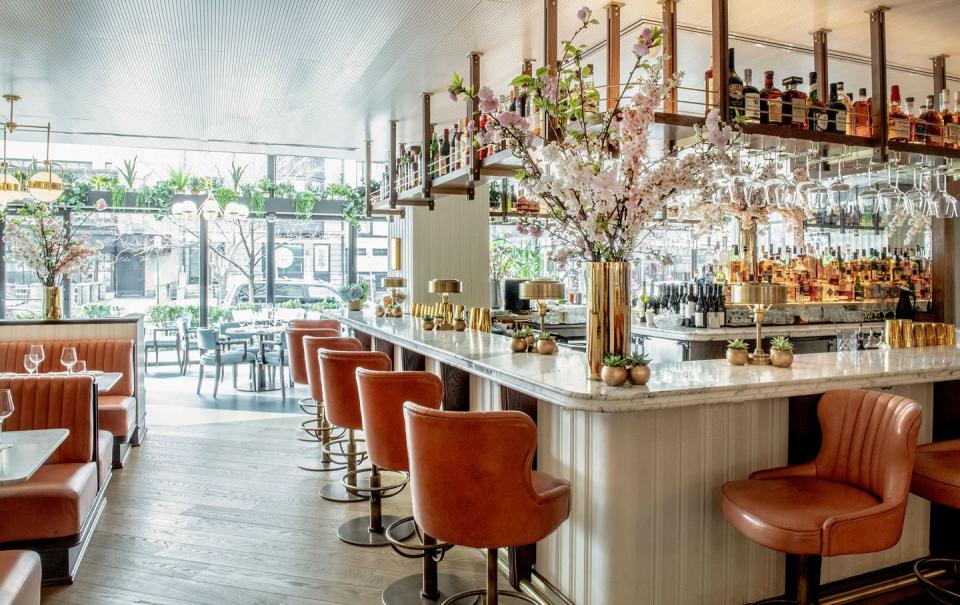
Also worth a visit: Martin Brudnizki designed the Doyle cocktail bar and the Pembroke restaurant, both at the Dupont Circle Hotel. Both offer all-day dining; the former more casual, the latter on the pricier side. Lebanese designer Marc Dibeh created the interiors for Residents (so named because the founders were immigrants who became residents) a millennial favorite renowned for espresso martinis and boozy brunches. Restaurateur Stephen Starr tapped Shawn Hausman for Le Diplomate, the ever-popular 14th Street French bistro that will remind many of New York City’s Pastis, also a Starr-owned establishment.
WHERE TO DRINK
This intimate space, designed by Edit Lab at Streetsense, is a delightful study in color and texture. The floor and bar are clad in tiles set in a plaid pattern, the curvaceous seating niches feature Fornasetti wallpaper and pendant lamps festooned with fringe, and dark green Panton pendants hang from a similarly hued ceiling. Don’t be fooled by the cheeky welcome snack of Cheez-Its or the small menu (which includes a classic cheese ball and pigs in a blanket); Jane Jane takes its booze creations pretty seriously, with a sophisticated menu divided by spirit, including nonalcoholic options. Note: On weekends it opens at 2 p.m.

A favorite discovery in D.C. was Manifest, a Snarkitecture-designed two-chair barbershop with a coffee bar and, behind a hidden door and up a flight of stairs, a super-stylish speakeasy called Out of Office. This intimate spot accommodates only 30 people and is by reservation only. If you’re prone to drunk shopping, Manifest does stock a very tight selection of clothing and accessories by the likes of Marni, Rick Owens, and Acne Studios.
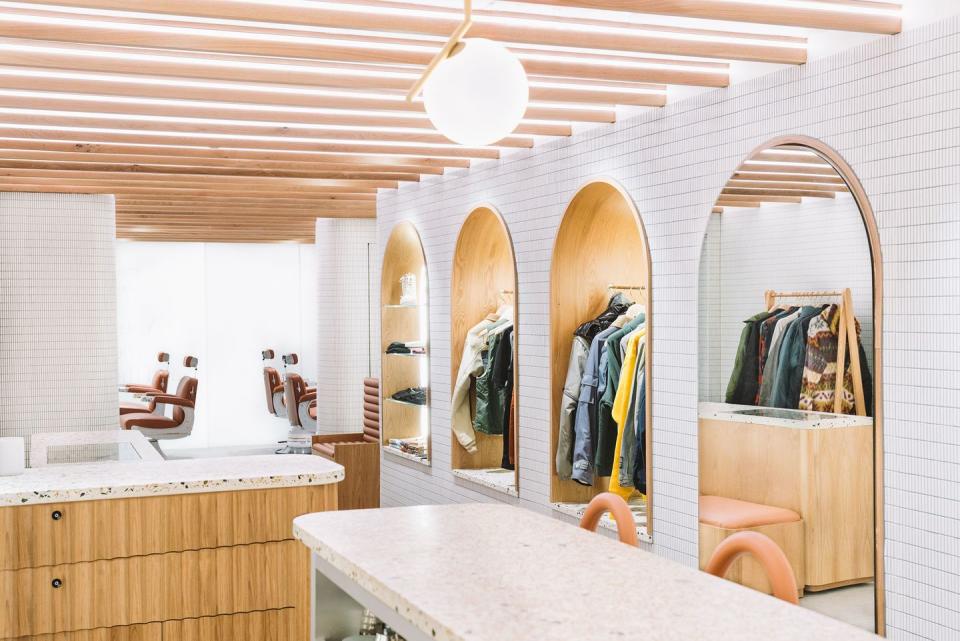
The Silver Lyan at the Riggs Hotel
Located in the former subterranean vault of this onetime bank, the Silver Lyan is the first bar outside Europe from the legendary Ryan Chetiyawardana (a.k.a. Mr. Lyan), whose other establishments include the Lyaness in London and Super Lyan in Amsterdam. Food and drink menus were created with a “playful Lyan-like approach to looking at things a little differently” and are a really fun read—some of the drink names will make you laugh out loud. Martini fans take note: Each is served with a tray of garnishes that include an oyster, olive, lemon, and house pickled onion.
Billed as “The first bar to blend art, literature, social justice, craft cocktails, and hospitality,” the Allegory is hidden behind a nondescript door in the hotel’s Progress Library. A mural by artist Erik Thor Sandberg covers most of the walls in the space; it depicts a version of Alice in Wonderland as told through the eyes of Ruby Bridges, the first Black child to desegregate the William Frantz Elementary School in Louisiana in 1960. Creative director Deke Dunne runs the bar program here, with an illustrated menu that continues in words the visual tale on the walls, with imaginative drinks to match.
WHERE TO SHOP
We like to focus on local independent stores but realize that, when traveling, some may give themselves permission to pop into the likes of Hermès or Tiffany for a little something. If that’s your vibe, head straight to City Center and the blocks around it, where most of the luxury brands are clustered. Also worth a drive-by is the Apple Store in what was the Carnegie Library, an absolutely gorgeous building that was also the first desegregated public building in D.C.
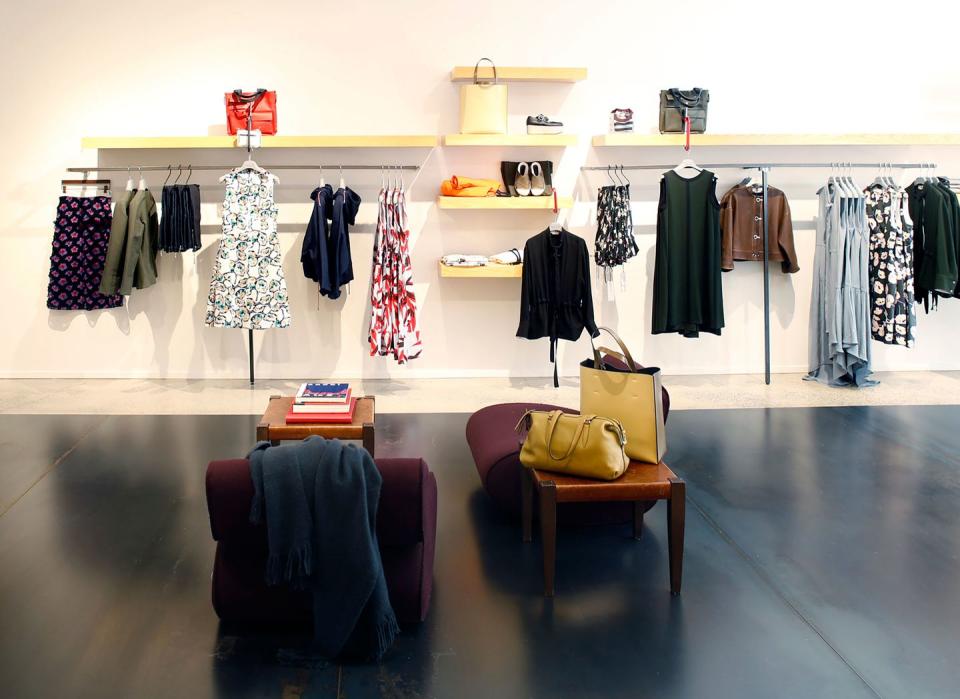
Georgetown has a fair bit of shopping but most of it is brands you’ll find in almost any city. Sid Mashburn and Ann Mashburn, side-by-side sartorial splendors, are two of the few local options, more about high-end fashion than home decor but worth a browse. Relish, in the same area, is also worth a visit. It’s a minimal space tucked away in Cady’s Alley and stocked with an excellent edit of high-end luxury brands like Marni, Simone Rocha, and Dries van Noten.
The Union Market District is a D.C. neighborhood on the rise, with new residential developments, restaurants, and shops. Most notable is La Consecha, a market focusing on contemporary Latin American merch and food that boasts a robust offering of on-site events from flower arranging and cooking classes to discussions on Latinos in government. Also in the area, a Herman Miller retail outpost, DC Cutlery, “D.C.’s only high performance knife shop,” and Shelter, a gem of a boutique focusing on jewelry by independent designers but with a small selection of home accessories and objects.

For the best local shopping, head to 14th Street. Many home stores are clustered there, from recognizable names like Mitchell Gold Bob Williams, Room & Board, and Shinola to smaller favorites. The latter includes two vintage shops that designers swear by—Miss Pixie’s and Good Wood (technically just off 14th on U Street NW)—both have a selection of non-intage goods as well. Logan Hardware has a fun, albeit slightly kitschy, selection of home accessories. Pop into Commonwealth, a super-cool space designed by Los Angeles–based firm wrk-shp, for sophisticated streetwear from the likes of Engineered Garments and Visvim. The Outrage specializes in “activist merch,” most of it made in the U.S., and donates 100 percent of net proceeds of every single purchase to progressive organizations. Salt & Sundry has two locations, one here and one in Union Market, and is a go-to for casual cool decor for every room of the home.
Finally, interior designer Melissa Sanabria opened a retail showroom in the historic Capitol Hill area, showcasing local designers including ceramics by Alfaro Pottery, illustrations by Erin Thompson Studio, and vintage rugs from Passerine.
You Might Also Like

